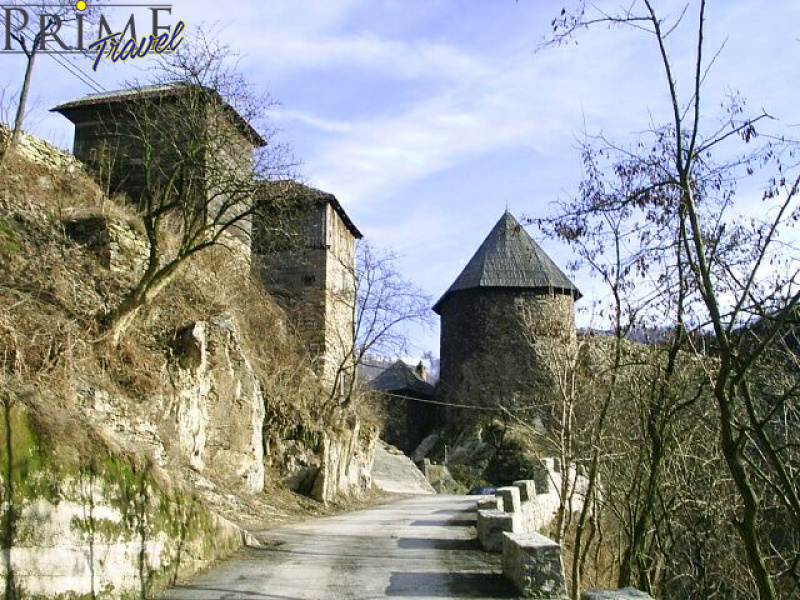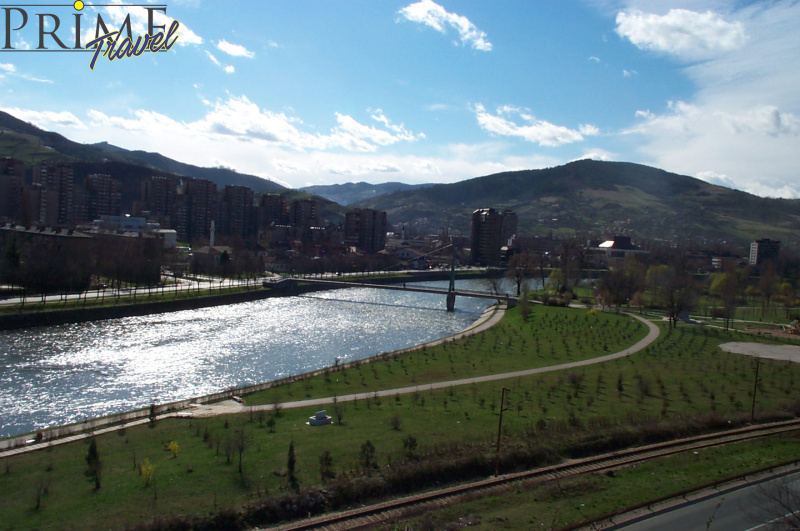

Price: Contact us
Today´s Zenica urban part has been already formed in the early New Stone Age - Neolithic and especially later at the time of the Illyrians which today witness the toponyms of their ruins Gradisce, Gracanica, Gradac. So did probably exist the royal castle Vranduk under the name Arduba at the time of the Illyrians. The culmination of today's space Zenica was achieved in the first six centuries After Christ when the area of today's Zenica, with Bistua Vetus (village Varvara in Rama) and Delminium (Duvno field), also have one of the three most significant municipia and center of the Christian dioceses in Bosnia, Bistua Novae . The importance of Bistua Novae witnesses to us the fact that her bishop, Andrija (Andreas) has participated and was the signator of Solin Synod of 530 and 533 year.
In 1892, in the area of Zenica archaeological excavations, which was performed from Ciro Truhelka for Zenica´s Village Bilmisce, turned up to discover a basilica from the Roman era. This building was built as a twin basilica (basilica Gemini) which is a rarity among the previously known Christian churches. Rarity of these structures is confirmed by the fact that until now only two such churches were known, one of St. Ulrich and Afre in Augsburg and the church of St. Stosije in Zadar. The discovery of the basilica enlightened many uncertainties, particularly those of locating a Roman municipality Bistua Novae. Archaeological excavations have revealed the basilica, that are identical church that are standing side by side. According to current findings it is known that one served as a parish and the other as a cathedral. In the church was also found two epigraphic inscriptions, one of it is significant for the clarification of the location Bistuae. The inscription DEC. MUN. BIS. supports the assumption that the territory of today Zenica can locate the center of a Roman town and early Christian diocese. Opposite the Bilmišće, on the left side of the river Bosnia, in Zenica Village Odmut traces of the old Roman cobbles were founded, called vio Munit.
Sights that you can visit in Zenica:
Vranduk
Old Vranduk is a small town located about 10 km from the city of Zenica in central Bosnia. It is located on the left side of the valley of the river Bosna. At this point the river Bosna is the narrowest and has the appearance of a gorge.
Old Vranduk was probably built in the late 14th century on a strategically important road. Since its establishment in 1463, Vranduk was a gubernatorial town, and then the royal castle. He was the only fortified town in the county of Brod, one of the seven counties of medieval Bosnia. The name Vranduk was first mentioned in 1410. In it, the Bosnian kings received the delegation, signed agreements and issued charters. Brother of King Tomas, Radivoj, in the documents is referred as "Duke of Vranduk". Greater trade and crafts estate outside the ramparts is formed in the village of Varošišać, about 2.5 km away from the fort in Vranduk. Here have the Franciscans founded a monastery and in the middle of the 15th century built the Church of St. Mary.
Vranduku experienced the full development in the XV. century. Nearby Vranduk has been developed a facilities defensive system and within these walls a less complex "sotto Vranduch". King Tomas has devoted special attention to Vranduk: under the city he has built the Church of St. Tom, his protector, for which he received special privileges from the Pope, the city were transformed and strengthened the ramparts.
The Ottomans have repeatedly besieged Vranduk. They've captured it in 1463. In his campaign against Bosnia in 1697, Eugene of Savoy, noting the weight of the conquest of the city, has passed Vranduk. At the beginning of the 18th the Vranduk office was established. In the 18th and early 19th century the city was used as a prison for political prisoners. Austrian troops occupied the town in 1878 and it maintained a garrison until 1890 when it was abandoned.
The old Vranduk belongs to the hill fortifications type. The fortress, in spite of later alterations, retained the original shape, that resembles to the earlier European fortress. In the Middle Ages the main tower was higher and the bailey area was divided by a wall. The small tower and the east wall were subsequently upgraded to protect the entrance to the fortress. As part of the bailey there were more facilities for various purposes, where also were discovered the remains of "Dizdar's house."
Within the walls of the Old City were found numerous archaeological finds from the Middle Ages and the Ottoman period: pots, jewelry, coins, tools, etc. All these finds are kept in the Museum of the City.
Sultan Fatih Mosque
Vranduk´s mosque known as Sultan Fatih Mosque was built after the Ottomans occupied Vranduk in 1463 . Vranduk´s mosque was the fortress mosque that has been built directly next to the fortress. Such mosques generally didn´t had a fountain, but a well that was located within the fortress.
The mosque belongs to the type of mosque with wooden double-sided mahfil and wooden minaret. One of the characteristics of this mosque is its two entrances - the north and the west side. The mosque, like all objects in Vranduk, had a steep hipped roof clad with shingles. With later interventions on the mosque was modified the roof pitch and type of roof cladding.
A large number of the Imam of the mosque were from families Imamovic in Vranduk. In this family is kept the Bereat issued by the Bosnian vali Silahdar Abdullah Pasha, in the month of Muharram 1195 A. H. (1780 / 1,781th).